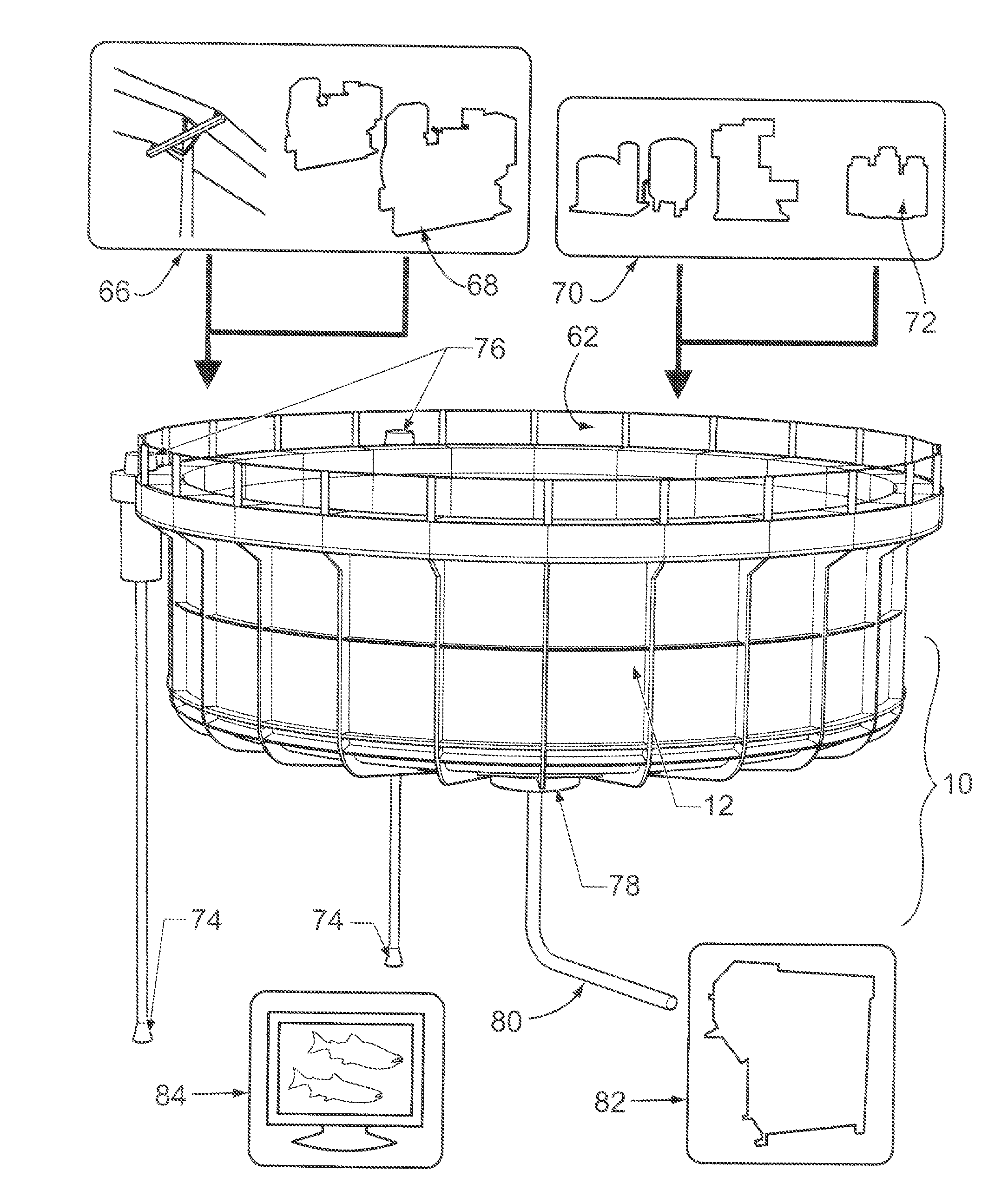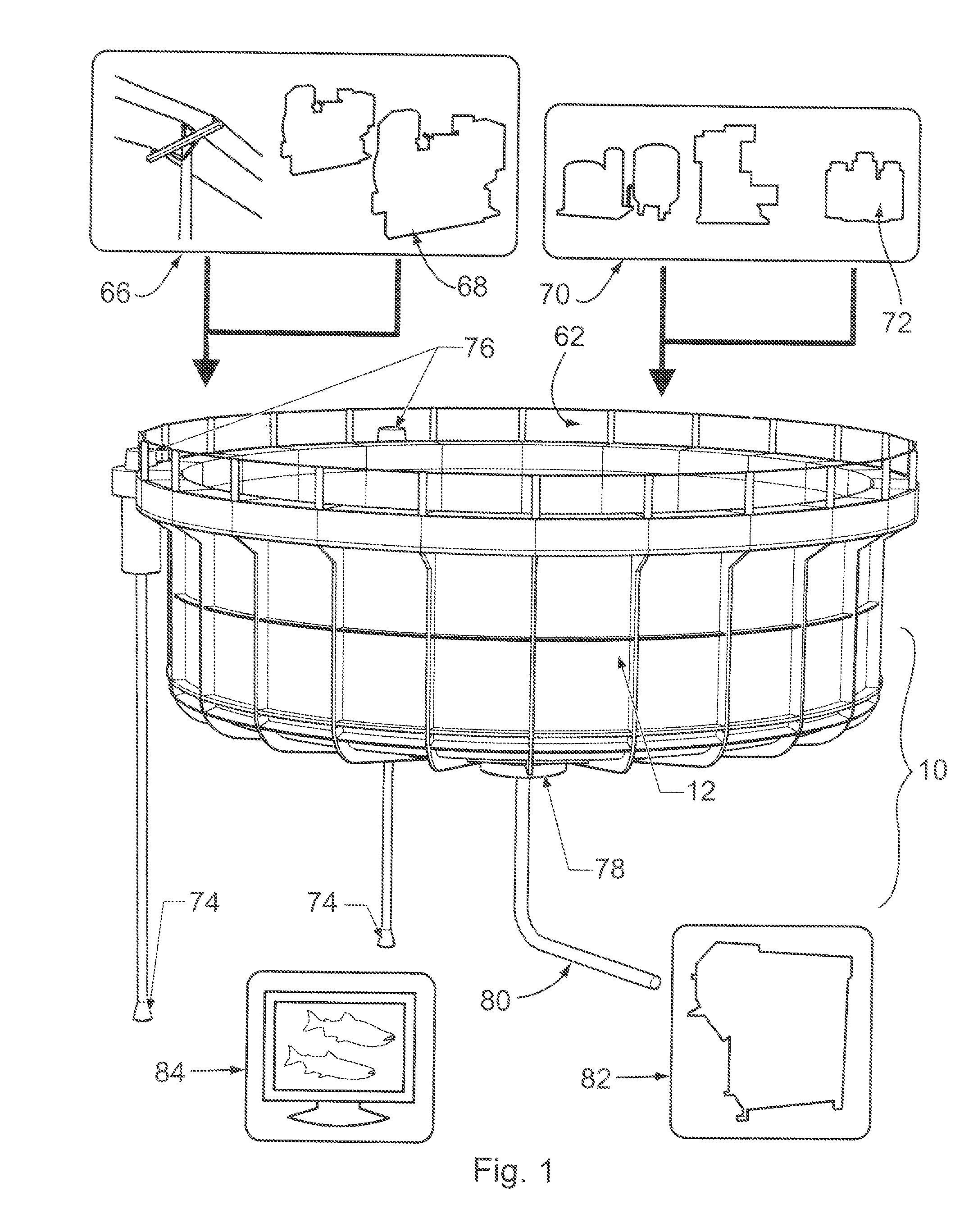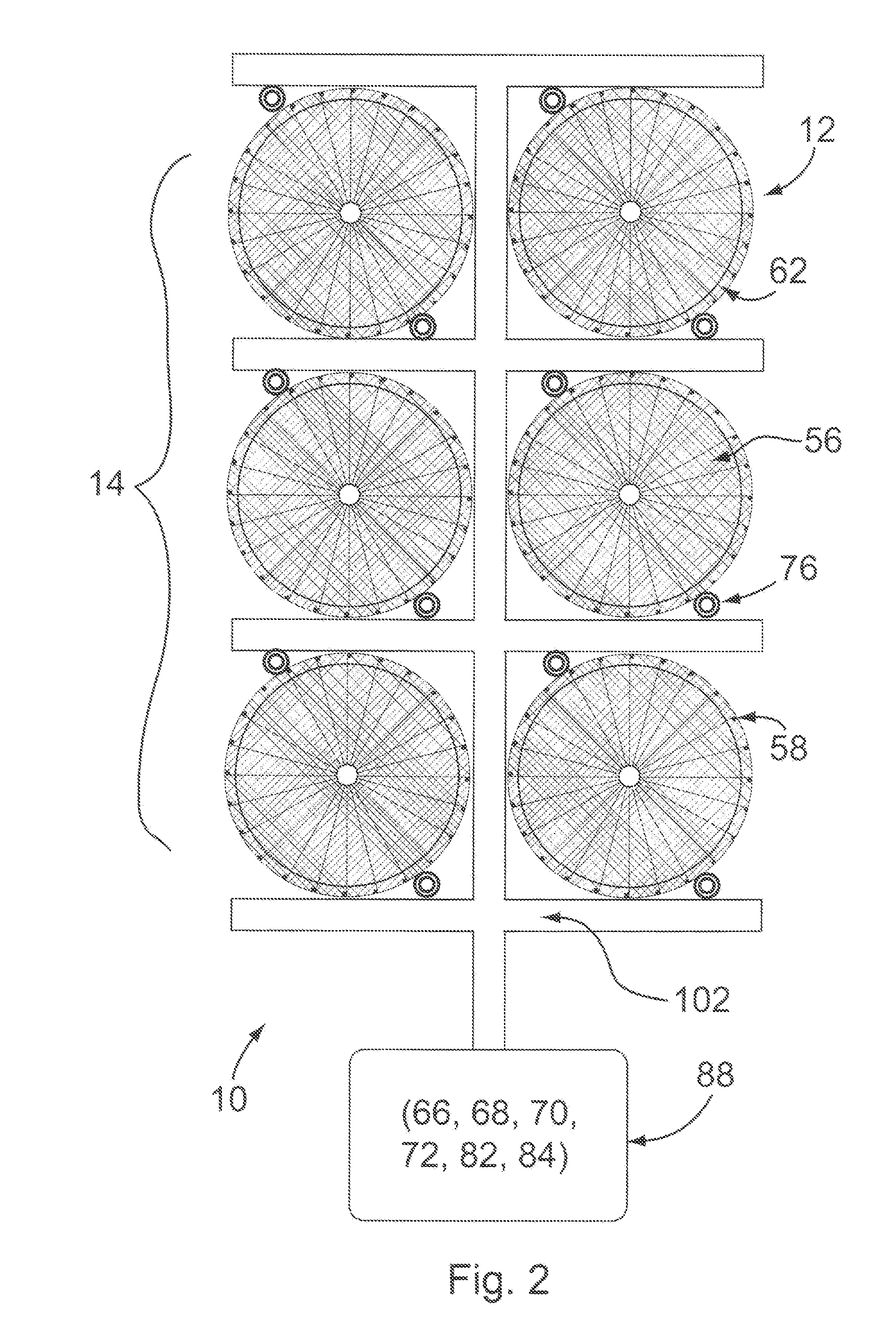Solid wall closed containment aquaculture system
a technology of closed containment and solid wall, applied in the field of aquaculture, can solve the problems of reducing fitness, affecting the salt-water balance of fish, and rendering fish less viable,
- Summary
- Abstract
- Description
- Claims
- Application Information
AI Technical Summary
Benefits of technology
Problems solved by technology
Method used
Image
Examples
Embodiment Construction
[0178]Referring to FIG. 1 a schematic overview of the components of the closed containment fish rearing system 10 show a closed containment fish tank 12, with water intakes 74, water pumps 76, walkway 62. waste trap 78, waste outlet 80, and waste filtration system 82. An electrical power supply 66 and diesel backup 68 enable the pumping of water for circulation within the tank 12. The water pumps 76 circulate water within the tank to exercise the fish, to provide the proper water conditions regarding temperature, purity, and oxygenation, and to direct debris via vortex action to a waste trap. The water pumps can be adjusted optimally to create a single “donut” vortex of water in combination with the substantially cylindrical shape of the tank above its bottom. An oxygen supply 70 and a liquid oxygen backup 72 enable enhanced oxygenation of the water for the benefit of the fish to be reared. An electronic monitoring system A monitoring system 84 is used to display fish and water cond...
PUM
 Login to View More
Login to View More Abstract
Description
Claims
Application Information
 Login to View More
Login to View More - R&D
- Intellectual Property
- Life Sciences
- Materials
- Tech Scout
- Unparalleled Data Quality
- Higher Quality Content
- 60% Fewer Hallucinations
Browse by: Latest US Patents, China's latest patents, Technical Efficacy Thesaurus, Application Domain, Technology Topic, Popular Technical Reports.
© 2025 PatSnap. All rights reserved.Legal|Privacy policy|Modern Slavery Act Transparency Statement|Sitemap|About US| Contact US: help@patsnap.com



